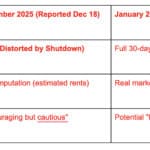Wall Street Journal
January 5, 2009
By E.S. BROWNING
The current U.S. recession, with no end in sight, threatens to be the longest since 1933, and that helps explain why investors are having so much trouble gauging the stock market.
Models developed in the more normal times of the past few decades, based on things like corporate-profit forecasts, the interest-rate environment or the length of the average recession, have failed in the current, exceptional economy. Many have signaled that stocks were cheap and it was time to buy, but stocks kept falling and got cheaper.
Since the Great Depression, only two recessions have run longer than this one, the first ending in 1975 and the other in 1982. Each lasted 16 months, according to the National Bureau of Economic Research, the government-designated recession tracker.
The current recession, beginning in December 2007, has run 13 months and could easily surpass those two.(No kidding. - AM) If it goes past March, as many economists expect, it will become the longest-running since the 43-month beast that ended in 1933.
Almost no living money manager has seen anything like this.(Those who ignore history...- AM )The devastation has hit almost everywhere, including finance, manufacturing, oil, consumer companies, technology, real estate, commodities and most foreign markets, developed and developing.
With the Dow Jones Industrial Average up almost 20% from its November low and the Standard & Poor's 500-stock index up more than 20%, some investors are hoping the worst is over.(Reading your newspaper why would anyone think such a thing? - AM) But others, not so confident, have put aside standard models. Instead of trying to play the stock rebound, they are considering what to do if markets and the economy remain troubled for a sustained period.
Most money managers learned the business in the 1980s and 1990s, a time when stocks typically rebounded quickly from declines. The rare bear market was simply a chance to buy stocks cheap and profit as they zoomed ahead again. (You can't inflate your way out of the business cycle forever. - AM)
Investors developed models to help them pick stocks during that period. They came to believe that, with a service-based economy, severe recessions couldn't happen any more.
Extended periods of economic weakness were rare after the 1930s, with the notable exception of the 1970s, a decade plagued by inflation. But in the 19th and early 20th centuries, recessions were more common and lasted longer. The stock market was considered a risky place where fortunes could be lost as easily as made. (Looks like it is back to the future.- AM)
While a return to that kind of era seems unlikely, a period of extended economic weakness would be an unsettled environment for stocks. Today, success in the market may be more about patience than about quick rebounds. (Buy and hold has worked pretty well for the last decade, hasn't it? - AM)
Another way to analyze stock prices is to measure them in terms of average corporate profits over the previous 10 years. That smooths out excessive profit swings. By that method, stocks are at their lowest levels in about two decades, which sounds pretty favorable.
Trouble is, based on long-term historical averages, stocks have been trading at above-average price-earnings ratios for almost that entire two-decade period.(Nice of you to mention that. - AM)
Monday, January 5, 2009
Subscribe to:
Post Comments (Atom)




No comments:
Post a Comment